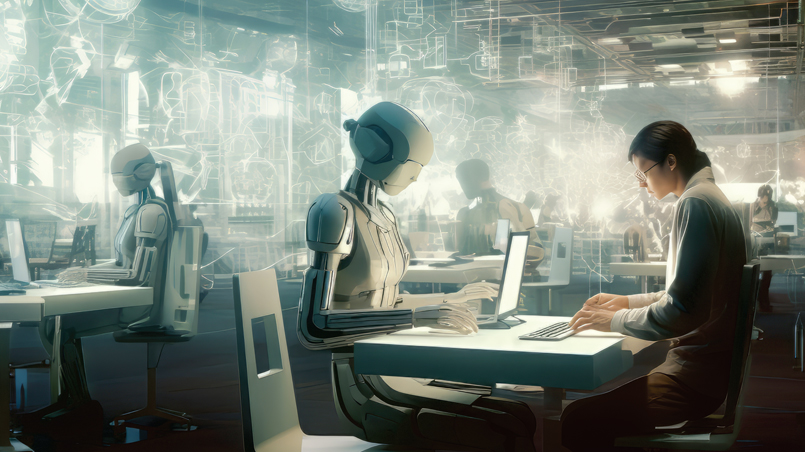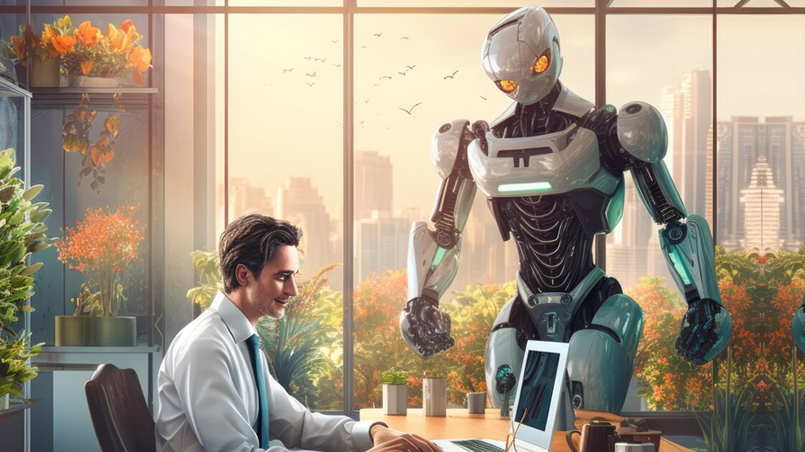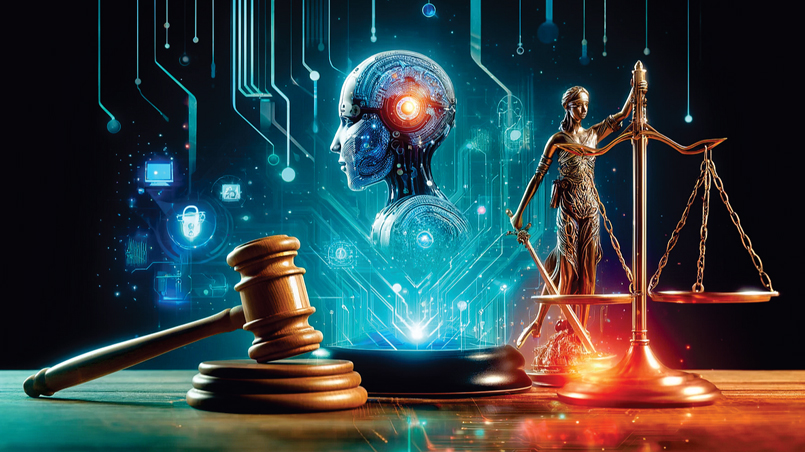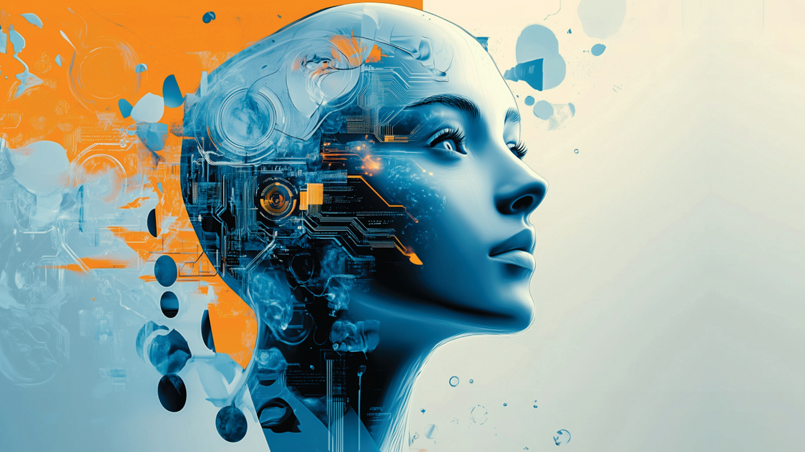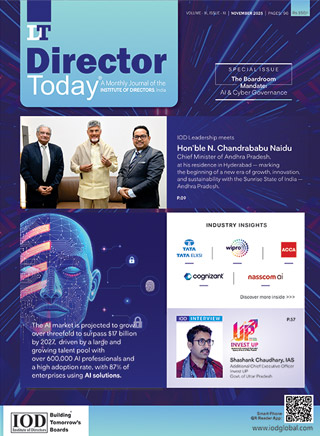Demystifying Artificial Intelligence: Opportunities & Challenges

In today's tech-savvy world, Artificial Intelligence (AI) is no longer a concept confined to science fiction. It is reshaping industries, redefining jobs, and recalibrating the very way we live and work. Yet, for many, AI remains an enigma. This article aims to demystify AI, explore its applications, and examine both the promise and perils it brings, especially from a business perspective.
What AI Really Is
Despite the buzz, AI is often misunderstood. The term “Artificial Intelligence” was coined in 1956 by John McCarthy, but it may be something of a misnomer. Rather than implying sentient machines or self-aware systems, most AI today is essentially the application of advanced statistical algorithms to massive amounts of data. It's “Applied Statistics in Action”.
At its core, AI systems identify patterns in data and make predictions or generate outputs based on those patterns. What has changed in recent years is the volume of data, the low cost of storing that data, and the plummeting cost of computational power. These factors together have fuelled AI's explosive growth and real-world viability.
Why AI is Making Headlines Now
Three transformative trends have catalysed the rise of AI:
1. Data Explosion: Billions of IoT-connected devices and user interactions are generating an avalanche of data every second.
2. Cheap Storage: Storing massive datasets is no longer prohibitively expensive.
3. Inexpensive Computation: Thanks to cloud computing and specialized hardware, running complex algorithms at scale is more accessible than ever.
These factors together mean that statistical models—many developed decades ago can now be applied in real-time and at scale, unlocking powerful new capabilities.
Types of AI Systems: A Simplified Overview
There are 3 fundamental types of AI systems:
• Supervised Learning: Models learn from labelled datasets (e.g., past fraud transactions) and predict outcomes (e.g., flagging new fraud).
• Unsupervised Learning: Systems analyze unstructured data to find hidden patterns (e.g., image recognition or customer segmentation).
• Reinforcement Learning: Like training a dog with rewards, this model learns optimal actions through trial and error. Applications include self-learning chatbots and robotic process automation.
Whether you are a business leader, a technologist, or a curious citizen, the AI wave is one you cannot afford to ignore.
Machine learning and deep learning are subfields of AI. While ML predicts outcomes using structured data, deep learning mimics the human brain using neural networks to tackle complex tasks like image or speech recognition.
The Building Blocks of AI Systems
AI systems are constructed using inputs (data from sensors or systems), computation (via cloud or edge devices), and outputs (decisions, actions, or insights). Cloud computing processes and stores data centrally, while edge computing allows devices to operate independently and respond in real-time.
Some of the key statistical techniques used include:
• Regression analysis (predicting continuous values),
• Classification (categorizing outcomes),
• Clustering and segmentation (grouping data),
• Reinforcement learning (learning from feedback).
These algorithms are often implemented through off-the shelf frameworks, allowing businesses to deploy powerful models without building everything from scratch.
To build AI capabilities, businesses should start small, solve specific problems, and experiment with opensource tools. Observing competitors can also offer valuable insights.
Job Roles in an AI-Driven World
The AI revolution is not just technological—it's deeply human. New roles are emerging:
• Data scientists and analysts who create models,
• Hardware and IoT engineers who design interfaces,
• Software developers to build AI-driven applications,
• Domain experts to ensure solutions are grounded in business realities.
To build AI capabilities, businesses should start small, solve specific problems, and experiment with opensource tools. Observing competitors can also offer valuable insights.
Where AI is Creating Impact
Some sectors are already seeing significant AI-driven transformation:
1. Customer Service and Call Centers
AI is revolutionizing call centers with real-time voice correction, automated feedback to agents, and instant email or chat responses using tools like GPT.
2. Healthcare
AI can now diagnose conditions through retina scans or audit prescriptions for accuracy. Doctors may soon have AI assistants analysing patient histories and suggesting diagnoses. AI also aids in literature-based discovery (LBD), helping identify patterns in medical research.
3. Legal and Insurance
AI bots like "Harvey" create first drafts of legal documents, while insurance firms use AI to process claims and reduce fraud.
4. Education
Platforms like Duolingo use AI to personalize language learning. The promise of AI is a personal tutor for every child, democratizing highquality education.
5. Manufacturing
AI helps predict equipment failure, optimize production, and manage supply chain logistics through real-time image recognition and data analysis.
6. Space and Animal Communication
AI is pushing the boundaries of human capability—whether it's translating animal languages or analysing data from space probes.
7. Everyday Applications
Soon, AI will be embedded into daily tools like Excel or Tally, making intelligent automation an everyday feature.
Business-Specific Use Cases
In a corporate context, AI can streamline many functions:
• Human Resources: Automating job descriptions, resume filtering, and even preliminary interviews.
• Finance: Submitting invoices, reconciling payments, and reducing human error.
• Sales & Analytics: Accessing reports on performance, outstanding dues, or employee productivity instantly through AI-powered bots.
• Logistics: Using cameras and AI to identify materials and route trucks accurately, improving efficiency and reducing errors.
Opportunities: A New Paradigm for Progress
AI presents enormous opportunities:
• Greater Efficiency: Automating repetitive tasks means humans can focus on higher-value work.
• Uplifting the Lowest Common Denominator: AI can bring advanced capabilities even to those without formal education or training.
• Personal Assistants for All: Each individual could soon have their own AI bot, revolutionizing how we interact with knowledge.
• Unlocking Human Potential: With AI handling mundane tasks, humankind can pursue more ambitious goals.
However, this optimism must be tempered with realism.
Challenges and Ethical Dilemmas
AI is not without risks. Among the key challenges are:
1. Hallucination
AI models sometimes generate false but plausible information—a phenomenon termed “hallucination.” While some see this as creativity, others see danger.
2. Bias and Safety
Bias in training data can result in discriminatory outcomes. Ethical AI development requires transparency—knowing how an algorithm was trained, what data it used, and whether you're interacting with a bot or a human.
3. Data Privacy and Copyright
There's growing concern over AI systems trained on copyrighted or sensitive data without consent.
4. Regulation and Governance
AI is still in its early stages, yet regulation is already being discussed. This is a welcome change from the laissez-faire approach taken with social media, which allowed toxicity to fester. Self-regulation, professional oversight, and inclusive policymaking are crucial.
5. Environmental Costs
Training large AI models consumes significant energy and emits CO₂. There's also a shortage of GPUs needed to train such models, increasing costs and limiting scalability.
Looking Ahead
AI is a tool an incredibly powerful one but it's still a tool. It must be applied responsibly, thoughtfully, and inclusively. Its impact will be defined not just by code, but by the conscience and competence of those who wield it.
In the short run, we may overestimate what AI can do, but in the long run, we almost certainly underestimate its transformative power.
The AI era is upon us. The time to understand it, experiment with it, and prepare for its implications is now. Whether you are a business leader, a technologist, or a curious citizen, the AI wave is one you cannot afford to ignore.
Author

Mr. Hareesh Tibrewala
He is a serial entrepreneur with three decades of experience. He founded Mirum, India's leading digital agency, bought by WPP. He exited Mirum as CEO in Dec 23. He is a certified Independent Director, advises on Digital Transformation and Information Technology, and is an evangelist in Artificial Intelligence. He has co-authored a book on his entrepreneurial journey - If I Had To Do It Again.
Owned by: Institute of Directors, India
Disclaimer: The opinions expressed in the articles/ stories are the personal opinions of the author. IOD/ Editor is not responsible for the accuracy, completeness, suitability, or validity of any information in those articles. The information, facts or opinions expressed in the articles/ speeches do not reflect the views of IOD/ Editor and IOD/ Editor does not assume any responsibility or liability for the same.

 Quick Links
Quick Links
 Connect us
Connect us




 Back to Home
Back to Home

